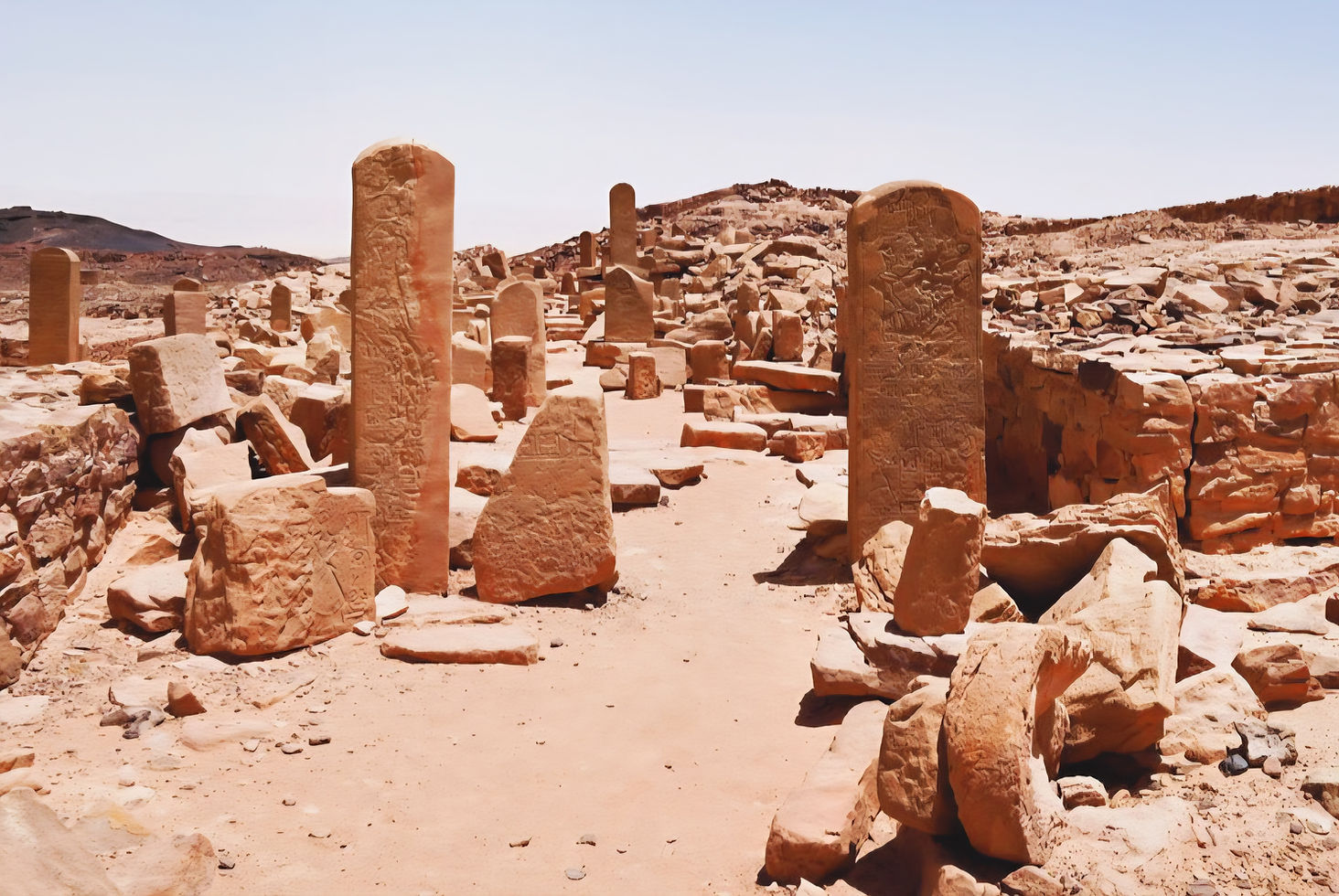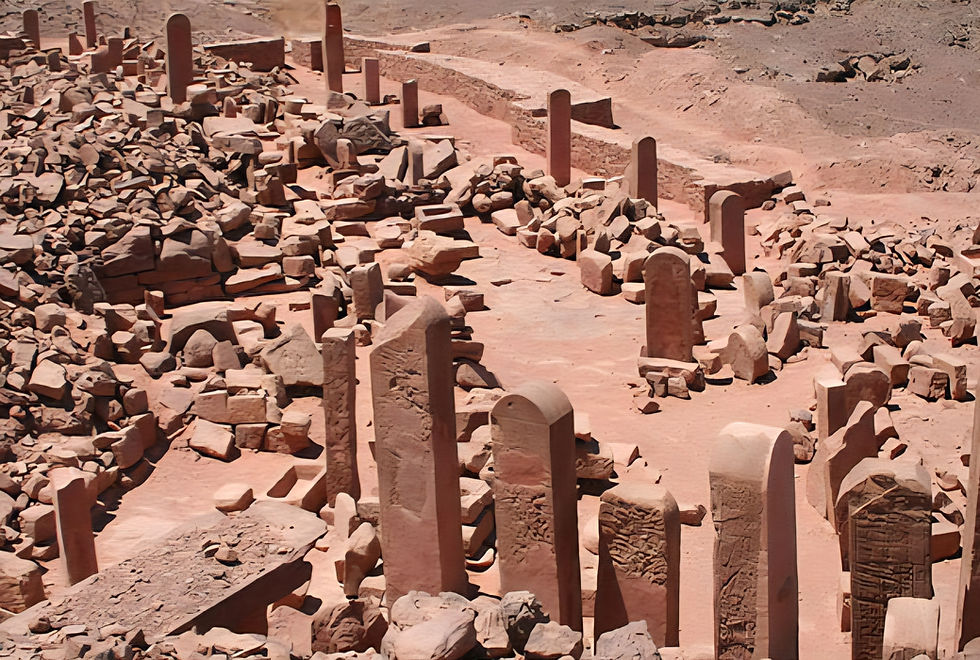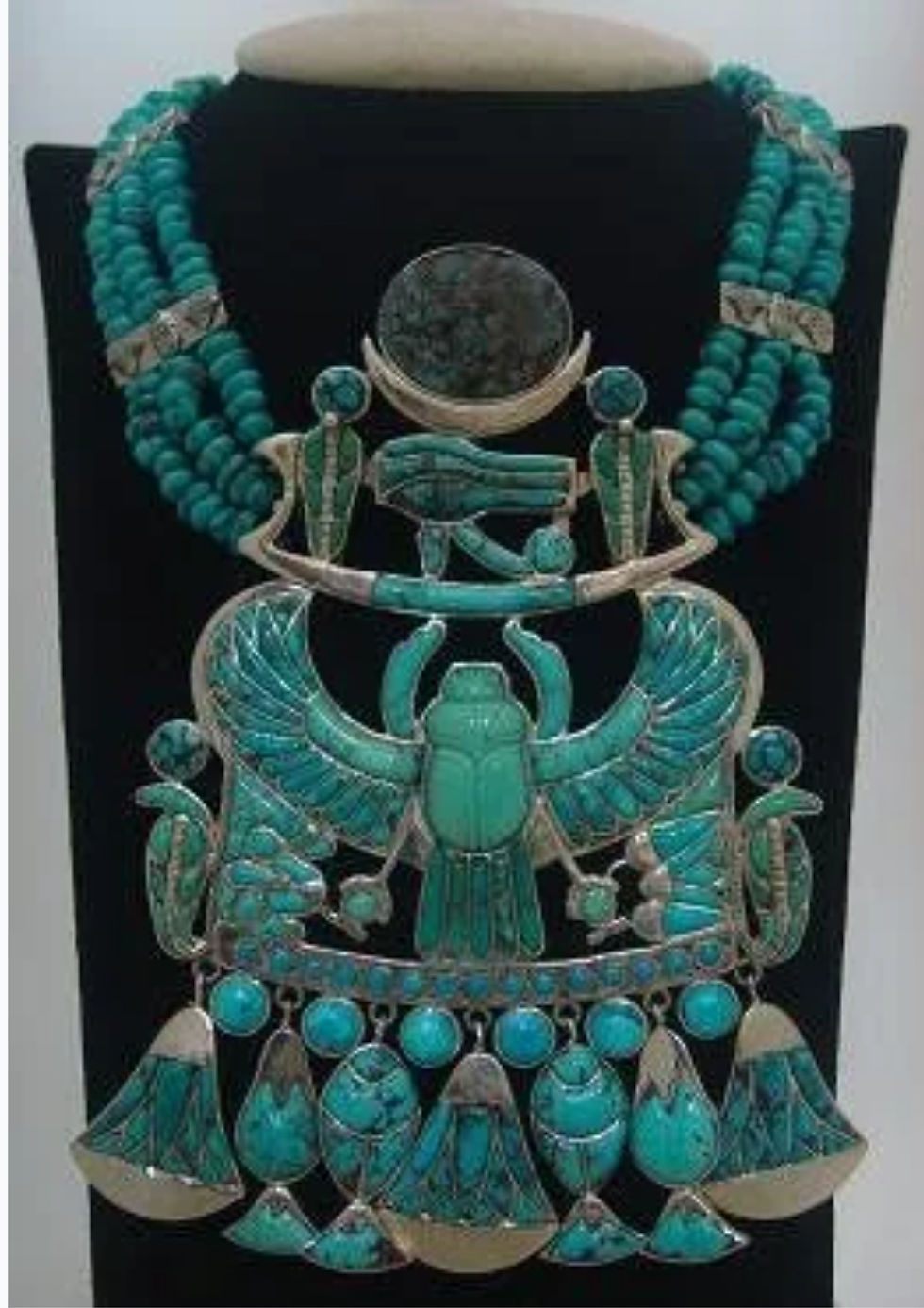
The Ancient Temple of Hathor and the Turquoise Mines of Mount Sinai
- goldenlightjourney
- Aug 19
- 3 min read

Serabit el-Khadim: The Ancient Temple of Hathor and the Turquoise Mines of Mount Sinai
Deep in the rugged landscapes of the southwest Sinai Peninsula, Egypt, Serabit el-Khadim, known as Biau (mining lands) represents the ancient Egyptians’ reverence for the goddess Hathor and their industrious pursuit of valuable turquoise and copper.
Located approximately 43 kilometers east of the modern city of Abu Zenima and 10 kilometers north of the archaeological site of Wadi Maghara, this remote locality on Mount Sinai was a hub of mining activity in antiquity, with its temple dedicated to Hathor, the "Mistress of Turquoise," serving as a spiritual and cultural cornerstone.
The Temple of Hathor, first established during the Middle Kingdom under the reign of Senusret I (1971–1926 BC), was a place of worship, healing, and commemoration. Hathor, the Egyptian goddess of love, beauty, and sensual power, was venerated here as a protector of desert regions and a guide for the pharaohs who sent expeditions to exploit the region’s rich turquoise and copper deposits.
The temple symbolized the divine favour bestowed upon the rulers who oversaw the mining ventures. Its significance extended beyond spirituality, glorifying the power and ambition of the pharaohs who harnessed the Sinai’s resources to fuel Egypt’s wealth and prestige.
The temple’s surroundings are marked by numerous votive stelae and chapels erected by successive rulers and mining expeditions, many of which line the pathways, caves, and interiors of the site. These offerings, dedicated to Hathor, reflect the site’s role as a place of worship and healing, where miners and expedition members sought divine protection and blessings.
The later name "Serabit el-Khadim," meaning "Columns of the Slave" in Arabic, derives from the tall, inscribed columns that define the temple’s architecture, standing as enduring markers of its sacred purpose.

The Sinai Peninsula was a vital mining region in ancient Egypt, being the most significant site for copper and turquoise extraction. These mines were operational throughout the Middle and New Kingdoms, worked primarily by prisoners of war from southwest Asia, likely speakers of a Northwest Semitic language ancestral to Phoenician and Hebrew. The turquoise, prized for its vibrant hue, held immense cultural and economic value, often used in jewelry and religious artifacts. The copper, alongside malachite, supported Egypt’s technological tools and artistic advancements.
The archaeological significance of Serabit el-Khadim extends beyond its mining and religious functions. Excavations, initiated by Petrie, revealed ancient mining camps, royal and private stelae, and offerings from the New Kingdom.
The Proto-Sinaitic Script
One of the most remarkable discoveries at Serabit el-Khadim came in 1904, when British archaeologist Sir Flinders Petrie uncovered about 30 inscriptions in what is now known as the Proto-Sinaitic script. Dating to the early 16th century BC, these inscriptions represent some of the earliest examples of alphabetic writing, a significant departure from the glyphs and ideographic systems of the time.
Likely influenced by Canaanite writing from 1900–1800 BC, the Proto-Sinaitic script is considered a precursor to the North Semitic alphabet, which later gave rise to fully developed alphabetic systems. Though not fully deciphered, these inscriptions provide evidence as to the evolution of early written language.
Serabit el-Khadim remains a window into ancient Egypt’s complex relationship with its desert frontiers, its gods, and its resources. The Temple of Hathor, located on the windswept peaks of Mount Sinai, provides remaining evidence of the ancient need to harness the treasures of the earth under the watchful gaze of the Mistress of Turquoise, Hathor.




Comments